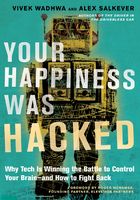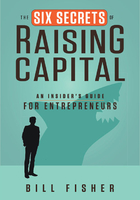START HERE
It's kind of fun to do the impossible.
WALT DISNEY
USER'S GUIDE
If you're already working on a project as a member of an organized group or team, then much of what's in this chapter has already been done for you. I suggest you skip to the section “Create a Vision for Your Project's Success.”
ASSUMING YOU'VE identified the problem you'd like to take on, start with these first two steps:
Research the problem.
Decide the form of your participation—you can join an existing organization or launch your own effort, either by yourself or by forming a group.
RESEARCH
At this stage, you don't need to become an expert. But you do need to learn enough about your problem to know what you might be getting into.
■ Find Out if There Are Groups Already Organized to Work on This Problem
They could be advocacy organizations, government agencies, professional associations, service clubs, or political groups. Use your favorite Web search engine. Ask friends. Check newspapers and magazines. Maybe a piece of your junk mail is from a like-minded group. If and when you find such a group, download or send for its information. If it's local, attend a meeting and ask questions.
■ Be Skeptical
There may be no organized groups with information you can readily tap. And even if there are, they're very likely to describe the problem from just their point of view. So do some independent research. Along the way, be skeptical (especially of people who tell you that nothing can be done), and be relentless in pursuing the information you need.
image
In 1993, when Evelyn Schaeffer took on the local phone company to get it to provide toll-free calling within her rural Ohio county, she knew next to nothing about the challenge she'd taken up. Eleven years later she writes:
I think it's generally true that the research initially shows that it can't be fixed—if it was easy, the problem wouldn't still be there. Initial questions about the problem are addressed to people who “know” about it, and that's where you really have to have enough passion in you not to accept what you are told, even from people you really respect. I started out asking about the phone situation and was told by execs in the local company all about technical things I didn't understand.
I spent a lot of hours just being stubborn, with a kind of “there has to be a way” mentality, until I'd assembled enough information and learned enough technical stuff that I could see the inconsistencies in what people were telling me as “truths.”
■ Use Multiple Sources
Go to the Web. Go to the library. Join organizations working on this problem. If your problem is local, find and talk to people both inside and outside organized groups who may have expertise and experience in dealing with it—academics, authors, and reporters, for example. Are there other communities, cities, and so on, with identical or similar problems? Talk to them. You'll learn some-thing—and it may even make sense to join forces with them.
■ Research the History of the Problem
When did it become a problem, and why? Were there past efforts to tackle it? If so, what happened? Even if the work went nowhere, it may have made some progress or unearthed some information you can use. And finding out why it died may show you some important pitfalls to avoid.
■ Identify the “Stakeholders”
These will include
people whose lives are directly affected;
people indirectly affected (such as taxpayers, for any issue involving public funds);
people charged with making the decisions regarding this problem;
people who can influence the decision makers (such as technical experts and consultants, and the media).
■ Learn the Vocabulary of This Problem and How It Affects the Discussion
Significant problems tend to develop a language of their own. People involved in the abortion issue, for example, tend to define their positions as either “pro-life” or “pro-choice.” Talk to people who've been involved in the problem that concerns you, to learn the subtleties and any pitfalls in the words used to describe it.
■ Listen to Groups or Individuals Opposed to What You Want to See Happen
Assess their information and learn from it—there's always at least one other side. How does your state justify clear-cutting in state forests? Why did your city council shoot down funds for public transportation? Read the speeches of the person you are not going to vote for.
■ Gain at Least a Beginner's Handle on Any Technical Background Important to This Problem
Just how toxic is that roadside spray you oppose, and what are the credentials of your sources? How does your state make decisions on transportation, and who makes them and when? What's the effect on small businesses and farms of eliminating the federal estate tax?
■ Examine the “Iceberg”
Problems are like icebergs—the part that's under the water is a lot bigger than the part you can see. The visible part is what people talk about easily. But the real problems are almost always deeper, below the waterline, and not so easy to talk about, especially if some of those deeper issues are your own.
Part of what's down there is hidden agendas. For example, a city council might blame budget woes for not extending mass transit from the inner city to the more affluent suburbs. But a real, if unstated, reason might be a fear that extending mass transit would bring with it inner-city criminals and crime.
Not everything below the waterline of a problem is as conscious and deliberate as a hidden agenda. With a contentious problem, you might be dealing with people who are carrying personal baggage—such as anger or resentment or fear of change—created by events and histories that may have no direct connection to what's on the table.
image Think of some complex problem you've been involved with that just wouldn't go away. Were there people involved—maybe you were one of them—with some history that was never on the table but that made dealing with what was on the table much more difficult?
We'll talk about how to deal with iceberg situations later, especially in the discussions in chapter 7 on negotiating and resolving conflicts. For now, think about the iceberg image and consider that, in doing your research, what you see on the surface is almost never the whole story. You'll want to get below the waterline of your issue as best you can.
■ At This Early Stage, Don't Be Afraid to Bail Out
In the course of this initial research, when your investment is small, you may find that this problem was not so much your problem to solve as you had thought. If that happens, drop back and find another one. It's out there. But if and when you're satisfied that this is your problem, and you've done some initial research, including independent digging, then…
DECIDE THE FORM OF YOUR PARTICIPATION
In the course of your research, you may have found a like-minded organization doing pretty much what you want to do. If what it's doing offers opportunities for you to make a satisfying contribution, there may be no need to start a project of your own. If it's local or if there's a local chapter of a larger group, then attend a meeting. If not, contact the group's headquarters and begin exploring how you can get involved.
But what if you don't find a group already working on your problem? Or what if you find a group, but its interest in your problem is peripheral, or you're not comfortable with other parts of its agenda, or you don't like the people running it, or for any other reason you don't see a good match? If you're determined to keep going, your choice now is to either make do with the imperfect fit or launch your own effort.
If you decide to go your own way and the problem is not so large, you might choose to start by working alone. That will remove some potential headaches—you get to call all the shots. But even the simplest of problems has a way of expanding beyond one person's time, resources, and abilities to deal with it, so be prepared to expand the project into a team effort if and when you need to do that (see chapter 4). By yourself or with a team you form, here are the next steps you'll need to take:
Create a specific project.
Create a vision for its success.
Add enough details so that you can begin to plan.
CREATE A SPECIFIC PROJECT
Choosing the problem answers the question “What do I care about?” “Violence in my kid's school” and “Ugly sprawl taking over my town” are examples of problems.
But problems are often broad and diffuse—great for inspiring action but not so great for providing detailed guidance. So after you've done basic research on the problem, the next step is to create a specific project that helps solve it—something you can plan and implement with the time and resources you've got or can get. Creating the project answers the question “How, specifically, can I make a difference?” A good project has a vision, goals, timelines, and a budget. “Creating a conflict-resolution program in my kid's school” and “Getting the town council to pass an anti-sprawl ordinance” are examples of projects created in response to the problems cited above.
image Choose the problem before creating the project—but don't ignore either step.
Swinging into action with only the problem burning in your heart, and without a defined project, is too unfocused to produce a good result. On the other hand, launching a project not linked to some underlying problem you care about risks undermining the clarity and enthusiasm you need to succeed.
Here are steps for creating your project:
■ Review the Research You've Done about the Problem
Who's already involved? What's the history and who are the stakeholders? What does the “other side” have to say? What's below the waterline?
■ Discuss Ideas for Projects with Friends and Potential Allies
What could you (or a group you start) do that would make a difference? Involving others at this early stage is more than a means of generating ideas—you may well attract people who'll stick around to work with you.
■ Think about the Scope of Any Project You Might Create
Projects, and commitments to projects, have a way of expanding once the action starts. How much time, energy, and resources are you personally willing to put in now? How might the work expand, and how far would you be willing to go with it if it does? You'll want to steer away from projects that are clearly out of reach—but don't settle for something that's too cautious either. Don't veto projects that require money, volunteers, or other resources you don't now have. You can get all those things as part of the work.
■ Take Stock of Your Own Talents, Skills, Experience, Likes, and Dislikes
Whatever project you decide on should make good use of who you are. Trying to put a square peg in a round hole is not a great way to start. If you can't draw, then launching an arts project for inner-city kids might not be the best choice for you. On the other hand, if you're a marine biologist, then leading beach walks for those kids might be perfect.
■ Weigh the Conflicts You Are Almost Certain to Generate
If you take on a project that's not going to be universally popular, you will be criticized. How big is your comfort zone on conflict, and are you ready to expand it if you have to? See chapter 7.
■ Don't Expect to Have All the Details in the Beginning
You'll refine your project as you go forward with it. What you want at this stage is a decent outline of your project—something from which you can launch the vision that will supply the inspiration and clarity you need for its success.
image
The Problem
Since the early 1970s, the quality of life that's made Washington State such a desirable place to live has been disappearing. Unprecedented population growth and sprawl have taken away thousands of acres of forests and farmland. Critical wetlands and wildlife habitat have been lost to development. Existing conservation rules for shorelines have been inadequate to protect salmon and the smaller fish they feed upon. All of these concerns directly threaten Island County, a small rural county consisting of two islands an hour north of Seattle. It's where my wife, Ann, and I have lived since 1985. The county's future is something we both care very much about.
The Research
It quickly became clear that the problem of preserving the rural character and environmental health of Island County was complex. While there were local environmental groups working on isolated parts of the problem by the mid-'90s, there was no existing group—and certainly no individual—with the skills and scope to take on the whole problem.
Part of the initial research involved gaining at least a layman's handle on the science dealing with streams, wetlands, aquifers, and habitat. Fortunately, there was plenty of information available from national and statewide environmental groups, from academic books and papers, from experts at nearby universities, and—as time went by—on the Web.
The legal problems were equally complex. Alarmed by the impact of growth, the Washington State Legislature in 1990—91 had passed the Growth Management Act (GMA), which called on the fastest-growing cities and counties, including Island County, to adopt “Comprehensive Plans” for their growth over a 20-year time span. Each city and county was given considerable flexibility to create a “Comp Plan” that fit local conditions, as long as it met key anti-sprawl goals set by the state. Because the legislature had avoided precise prescriptions, court interpretations and precedents that defined the GMA also became very important and had to be studied.
There were also intense political and social factors in Island County on which much depended. For decades a good-old-boy network had done pretty much what it wanted with land development in the county, and GMA or not, it was determined not to give up its freedom to act. While some professional developers shared concerns about sprawl and overdevelopment, many continued to work hand in glove with the good old boys to keep the county's rules for land development as few and as weak as possible.
Demographics were running against the old-timers, however, and many people had moved to the islands (my wife and me among them) with quite different views on the need for combating sprawl and preserving environmental values. So understanding local political and social realities, and how to influence local public opinion and elections, was key in any effort to take on this problem. Much of this homework involved talking to local opinion makers and to ordinary citizens from all quarters who had watched the county grow and change.
Finally, there were problems below the waterline that constantly threatened to sabotage progress. These included fear of change, greed, class problems, deep-seated angers and animosities from past battles, and visceral allegiance by some to ideologies of both the left and the right. In short, beautiful Island County was a minefield, and if you didn't know about, and take into account, the hidden agendas and buried emotions and prejudices, there was no way to navigate it successfully.
The Form of Participation
When Ann and I saw the threats posed by overdevelopment to the place we called home, we understood immediately that no one person could stop it. Within a year or so after our arrival, we helped organize a group called Citizens for Sensible Development (CSD), which quashed the heedless expansion of a local airport and also focused local attention on Island County's fragile water supplies. When the Growth Management Act was passed, however, it meant that every aspect of county land use had to be reviewed and decided anew, and CSD was too small to watchdog a task that big. The same was true for the other half-dozen environmental organizations in the county, each with its own unique focus, resources, and membership. We were all faced with Ben Franklin's famous dictum: we would hang together or we would hang separately. In mid-1997 we pooled our resources to form the Citizens' Growth Management Coalition.
The Project
Island County's commissioners, kept in power by the entrenched interests, had for years balked at creating a Comprehensive Plan to meet the growth management criteria mandated by the state legislature. In 1997, threatened with economic sanctions by the governor, the commissioners finally hired consultants and got serious about completing a plan that, even if it failed to meet some growth management goals, might at least reduce the immediate threat of economic sanctions.
Doubting that the county on its own would make the tough decisions needed to comply with the Growth Management Act, the coalition created a project whose goal was “to ensure that the County's emerging Comp Plan complied with the GMA, protected the environment, retained the rural character of the County and planned for enough jobs, housing, water and other infrastructure to sustain current and future residents.”
CREATE A VISION FOR YOUR PROJECT'S SUCCESS
A vision is a mental picture of the result you want to achieve—a picture so clear and strong it will help make that result real. A vision is not a vague wish or dream or hope. It's a picture of the real results of real efforts. It comes from the future and informs and energizes the present.
The practice of using visions is mainstream. Some companies use visions to communicate their values and goals. Professional sports teams use visioning exercises to improve performance (there are studies showing that basketball players who practice free throws only by “envisioning” the ball going through the hoop improve their shooting percentage almost as much as those who actually throw the ball). The director of a play might “envision” a perfect production before rehearsals begin.
This section describes the why and how of creating a vision. This information is useful whether you're creating a project on your own or you're joining a group already organized around a project. Later in the book, I'll show you how to communicate your vision to a group or team, pulling in volunteers and resources. I'll also explain how to use a vision to guide your planning process, to get institutions and bureaucracies to listen to you, and to shape your commu-nications—from speeches to brochures.
■ Why Visions Are Important
image Visioning is the most powerful tool I've witnessed in more than 20 years of helping organizations and individuals get the results they want.
One of the most famous visions in U.S. history was that of Martin Luther King Jr. When he said, “I have a dream,” there was very little national support for his cause, and Congress showed no signs of passing civil rights legislation. But Dr. King's vision catalyzed progress—in attitudes, strategy, actions, and legislation—where there had been none.
A vision inspires action. As in Dr. King's case, a powerful vision pulls in ideas, people, and other resources. It creates the energy and will to make change happen. It inspires individuals and organizations to commit, to persist, and to give their best. Giraffe Sarah Swa-gart used her vision to attract the help she needed to make that vision a reality (see sidebar, page 22).
A vision is a practical guide. Use it for creating plans, setting goals and objectives, making decisions, and coordinating and evaluating the work on any project, large or small. A vision is like true north on the compass—no matter what decisions on a project need to be made, you can test each option by asking if it will help attain the vision set for that project.
A vision helps keep organizations and groups focused and together. This is especially true with complex projects and in stressful times. A vision is a kind of glue, helping people in groups stay committed to a common goal, especially when there might be temptations and pressures to bail. If people share a vision, it's easier for them to see connections between what they want as individuals and the goals of the entire group.
Have you ever been in a group that spends an hour arguing over a small problem, like what color paper to use for a brochure? That's a group that needs a vision. When there's a clear, sharp, shared vision, a group doesn't get bogged down in trivia; the small stuff just gets handled because everybody can see and appreciate the bigger picture of where the group is going.
■ Not Every Picture Is a Vision
A vision should do the following things:
Be clear. It should be so sharp and so detailed that you can see, smell, and taste the smallest details. If your vision is teaching a kid to read, picture her getting through a whole page by herself for the first time, right down to the little catches in her voice and the huge grin that lights up the room when she's done. If your vision is achieving a personal best in running a race, feel the air rushing past your ears and hear the shouts urging you on. Hear the applause when you cross the finish line and look up at the clock to see that you've done your best time ever.
Be positive. Acknowledge the difficulties, but don't try to motivate yourself or others with a vision of bad things that might happen if you don't succeed. A vision that builds people's fears may help fuel immediate action, but it can also cripple creative and courageous thinking.
Be big enough. Create a bigger picture of the effects of your work than just solving the problem at hand. For example, see your hard work and commitment inspiring others to follow your lead in addressing the same problem in other places. See the lessons you learn informing others working on similar projects elsewhere. See your results added to other results to achieve widespread change. Don't lose your focus and commitment on the challenge where you are—but do allow yourself to develop a vision of the full scope of what you can achieve.
A vision that's too small may not provide enough inspiration or generate enough energy to get you past the tough spots. It might even close your mind to what you could achieve. In the Citizens' Growth Management Coalition in Island County, for example, we saw from the start that sharing our extensive research on land-use problems over the Internet could help create a statewide pattern of change. Giraffe Michael Stewartt's vision grew from combating one local environmental abuse to a worldwide campaign (see sidebar, page 28).
Include changes in attitudes. Remember the iceberg! The challenge you see in front of you is only the part of the problem you can see—the rest of the challenge is deeper and often involves personal attitudes that may be strongly held. That's why effective, long-lasting solutions demand changes in people's attitudes. Any strategy that ignores attitudes is likely to be a short-term fix—the “solved” problem will reappear, often in a different form.
Include a clear picture of your personal role. This isn't about ego. It's about your taking full responsibility for helping achieve the results you want. It's you out of the stands and onto the playing field.
Come from the heart, not the head. Don't try to think your way to a vision. To create a vision that's exciting and compelling, you've got to give yourself the freedom to dream—to use your imagination to see and feel what does not yet exist. Put yourself into the future and look back. It's easier to do that during a long, quiet walk than over a yellow pad.
A vision is not the same as goals or objectives; they come from the head and are very important at a later stage in the planning process (see chapter 5); they flow from a vision and guide the specific steps that will make it real.
■ What's the Vision for Your Project?
The following instructions are for creating a vision with a group, but you can easily adjust them if you are visioning on your own.
Start by reviewing everything you know about your problem and about the project you intend to take on. Then pick a date in the future when your project will have just finished.
Ask everyone to put themselves into the future at that date and at the place where the results of the project are most evident. They can close their eyes if that makes this process easier. The project has been a huge success. Ask everyone to spend a few minutes “seeing” that success. Start with any new or different buildings, equipment, or events. Ask everyone to describe in their minds the people they see, right down to the color of their socks. What new sounds and smells are there—kids laughing, hot dogs cooking… ? If there's media coverage, describe it. Let the images flood in. How do the people affected by this project feel about it? How have their attitudes changed? What are they saying? What does their body language tell you? How do you feel about this success? Ask group members to keep drawing more and more detailed mental pictures, always keeping themselves in the future, looking out and looking back.
Now split people up into pairs, and ask each person to spend three minutes describing his or her vision to a partner. They are in the future, so the only hard and fast rule of this exercise is never to use the future tense. It's not “We will prevent a cut in state education funding” but “We have prevented a cut in state education funding.”
When everyone has described a vision, ask them all (still in the future) to look backward and silently reflect: before their project started, what were the three biggest obstacles they faced? At least one of these obstacles must have been an unhelpful attitude on the part of someone involved (maybe the person visioning!).
When everybody's got three obstacles, ask them, again in pairs (looking back and not forward), to describe what those three obstacles were and how they overcame them. Urge people not to slow down by trying to analyze or ponder—just let the pictures flow. The project did succeed, so obviously the obstacles were overcome. How did that happen? Just start talking. People will be surprised at how many good problem-solving ideas appear. (When you move on to actually planning and carrying out your project in chapter 5, what you've gained from this technique will help you see obstacles not as insurmountable, but as similar to the hurdles you've already jumped in your vision.)
Finally, pull people back to the present and ask for volunteers to describe their visions, including the obstacles they had to overcome to get there. Write (or draw) these pictures on a flip chart or blackboard. Discuss them, noticing which ones come up most often. Then start pooling all these vision elements into a composite picture that fairly represents the vision of the whole group. Put that picture into a vision statement. A short, relatively cohesive paragraph is usually enough, but there's no word limit. If you wish, illustrate what you've written with drawings or photographs. Again, you are not writing goals and objectives—that comes later, when we get to the from-the-head stuff.
I've done this visioning exercise with hundreds of audiences, and I can't count the number of real and successful projects that have benefited from it. But if you're still skeptical, practice on smaller, private projects first—little things you want to happen in your own life at home or at the office, for example. Go through the process above. You'll gain confidence that it works. I guarantee you that a strong vision will consistently raise the odds of your success on any kind of project.
image
After we chose our problem, did initial research, and created our project, the next step for the Growth Management Coalition was to create a vision for the results we wanted. We chose 20 years as the end point for our vision, since that was the planning horizon set by the state. So we put ourselves 20 years into the future and “walked” or “drove” in our minds from one end of the county to the other. We saw, for example, how our towns had grown in people-friendly ways, how farms were prospering, and how habitat and environmental values had been conserved.
We then condensed all these pictures into a short vision statement and published it, both as a guide and inspiration for ourselves, and as a way of presenting an attractive, balanced picture of the future that would encourage our allies and convert at least some of our opponents. Through the next three years, that vision lent power and focus to everything we did. Especially when we hit rough spots, the coalition's vision helped keep us moving forward.
Here's the coalition's vision statement:
“It is 2020. Island County is a rural oasis, and a model for other places fighting to curb overdevelopment and sprawl in the crowded Puget Sound area. Even in our towns, we live with the sounds of frogs, owls, and coyotes and with the sight of mountains, prairies, water, and stars. We breathe clean air. We smell evergreens, saltwater, and manure. We drink clean water. For most of us, our travel is over country roads, past forests and pastures and working farms. Our economy is soundly grounded in our ruralness, including tourism, retirees' investments in real estate and services, and the payrolls of small-scale businesses attracted here by our rural style. Some of us are farmers and foresters, making our livings off our lands, and supplying County residents with fresh vegetables and meats. Our communities are pedestrian-oriented and people-friendly. There is good housing for all of us, good schools for our kids, and thriving arts communities. There are vigorous debates on many problems, but we do a good job of respecting divergent views and of focusing on what unites us rather than the opposite. We all see our home here as rural, and we are willing to act and vote in ways that keep it that way.”
ADD DETAILS TO YOUR PROJECT
Creating a vision should have sparked some new thinking about your project. What, exactly, does this project have to accomplish in order to make its vision real? What you need now is enough details so that you can begin to form an action plan (chapter 5). The list won't be complete, and that's OK—you'll add to it and refine it as you go.
You may also want to come up with an energizing name for your project—something that tells what the project is, conveys energy and commitment, and appeals to all the people who will hear about it or be involved in it.
image
After the coalition wrote its vision statement, it came up with a list of almost 30 details, each representing a specific action item that had to be accomplished before the complete vision could be realized. Here are the first seven, just to give you an idea of how this part of the process works:
Island County's new Comprehensive Plan must
comply with the State's Growth Management Act;
adopt standards for rural development that protect wetlands, streams, steep slopes, beaches, prime habitat, and other critical areas;
adopt standards for rural development that keep densities and uses compatible with rural character;
adopt policies that help farmers and foresters make adequate livings on their lands;
plan our cities, villages, crossroads, and residential communities to be pedestrian-oriented and people-friendly;
provide for a mix of housing; and
balance regulatory measures with non-regulatory options and incentives.
A GIRAFFE STORY
Sarah Swagart
Back when she was an eighth-grader, Sarah Swagart decided it was wrong for young skateboarders to be treated like criminals in her town, Oak Harbor, Washington. Kids who “skated” in Oak Harbor's parking lots and on its sidewalks were threatened with fines of as much as $500 and 90 days in jail. Swagart, not a skateboarder herself, could see that the kids might be annoying but they definitely didn't deserve treatment like that. The skaters were nobody special, she thought—just boys who needed a place to exercise their sometimes awesome skills.
Swagart formed Nobody Special, an organization whose mission was to get the skateboarders their own place to practice—and to get the community to recognize them as athletes, not hoodlums.
She shared her vision with a local architect, who volunteered to design a skateboard park. But there had to be someplace to put it. Swagart realized that no matter how much it scared her to speak in public, she had to start talking if the kids were going to get some land and build their park. She drew up a petition for land and got signatures from kids, teachers, police officers, and even some store owners. Leading a delegation of 40 kids, she stood before the city council and pointed out that the town had baseball fields, basketball courts, a roller rink, and a swimming pool where kids could do the sports of their choice. What would be so different about accommodating the skateboarders?
The city council agreed that there could be a park next to the public swimming pool. Then Swagart and the skateboarders got a commitment from the Seabees at nearby Whidbey Naval Air Station to do the construction work. They got local businesses to donate materials. And they organized a series of events to raise the rest of the money needed. The skaters' park is now a reality.
A GIRAFFE STORY
Michael Stewartt
When an environmental group was working to stop a big coal-fired power plant from being built near the Grand Canyon, Michael Stewartt, a private pilot, had an idea: he and some pilot friends flew reporters and photographers over the proposed plant site so that they could see for themselves how close it was to the canyon. It worked. The controversy created by the media stories forced the power company to scrap its plans.
The Grand Canyon flyover worked so well that Stewartt envisioned volunteer pilots providing the same service for other areas endangered by pollution or clear-cutting. He got a wealthy Colorado rancher to share his vision of an environmental “eye in the sky.” The rancher let Stewartt use one of his planes and enough gas for 150 hours of flying. The new organization, LightHawk, was off the ground.
In the early years, Stewartt and another pilot worked primarily with conservationists in the Rocky Mountains and with Arizona's Smelter Crisis Education Project (SCEP), laying the groundwork for a success that would really put wind beneath LightHawk's wings.
For 40 years, a copper smelter in Arizona had had the dubious distinction of contributing to more acid rain and air pollution than any other plant in the United States. When LightHawk photographed the emissions from the smelter, helping SCEP get it shut down, conservationists realized they had a powerful new ally. Stew-artt's vision of what concerned pilots like himself could do to save wilderness areas was becoming a reality. The organization grew to 30 active volunteer pilots who have their own planes and can give fast support to environmentalists.
The impact has been enormous. After a powerful politician who was a longtime timber-industry advocate flew over Vancouver Island with Stewartt, she began calling for an immediate end to clear-cutting. In Alaska, LightHawk spent a week flying legislators, conservationists, and reporters over the Tongass National Forest, America's largest rain forest. In the waters off the many islands and peninsulas they saw orcas, otters, dolphins, and humpback whales. On land, there were grizzly bears and wolves. But in the clear-cut patches where ancient old-growth Sitka spruce once stood, they saw silt-choked streams where fish could no longer live. That enlightening week helped start the ball rolling on a repeal of the U.S. Forest Service rules that allowed wholesale clear-cutting in the Tongass.
Stewartt's vision grew to include flying in Southeast Asia and Costa Rica and producing television ads on the crisis in the rain forests.
Web link: LightHawk (www.lighthawk.org/vp.htm).
image
Research your problem:
Find out if there are groups already organized to work on it.
Be skeptical, especially of people who tell you nothing can be done.
Be relentless in pursuing the information you need.
Use multiple sources.
Unearth the history of the problem.
Identify the stakeholders in this problem.
Learn the vocabulary of this problem and how it affects the discussion.
Listen to groups or individuals opposed to what you want to see happen.
Gain at least a beginner's handle on any technical background important to this problem.
Find out what's below the waterline—both hidden agendas and personal emotional baggage.
Don't be afraid to bail out, if at this early stage you find that this problem was not as much “your” problem as you'd thought. Find another problem to work on.
Decide the form of your participation: you can join an existing organization or launch your own effort, either by yourself or by forming a group of your own.
Create a specific project to address the problem you've chosen. Start by reviewing what you've learned about your problem. Discuss ideas with friends and potential allies. Determine the scope of your project—something not out of reach, but not too cautious either.
Create a vision of your project's success. A vision is a mental picture of something that does not yet exist—a picture so clear and strong that it helps make that something real.
Visions are important because of their power to inspire, to guide, and to keep organizations and groups focused and together.
A vision must be clear and positive. It must be big enough. It must include changes in attitudes and a clear picture of your personal role. A vision comes from the heart, not the head—it is not the same as goals or objectives.
Add details to your project. Creating a vision should have sparked some new thinking about your project. What, exactly, does this project have to accomplish in order to make its vision real?
WHAT'S NEXT? You've defined a project, created a vision for it, and come up with enough details to start planning in chapter 5. In the next chapter, we'll take a break from action steps and look at how trust and caring can help you make a difference in your community and the world.















